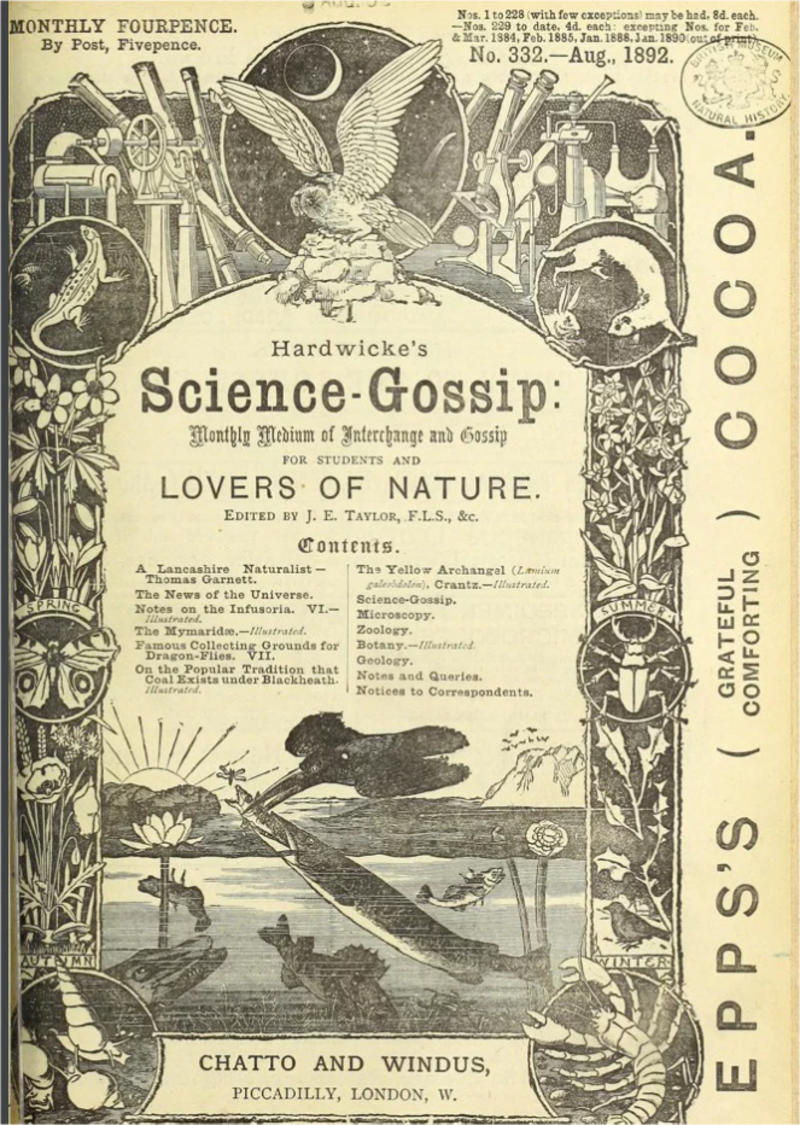Impact Case Study: Citizen Science – Past and Present

We are always looking for new ways to share the benefits of our research with a wide audience and we employ a variety of channels and innovative methods to assist its social impact, from theatrical productions to films, books, school workshops, games, apps, public engagement events, art, and more! We've asked a selection of our researchers to explain the different ways they are sharing their research. In the Impact Case Study below, Professor Sally Shuttleworth details the digital projects and public engagement events she organised to take her research to the widest audiences possible. You will be able to browse all the case studies in the Research section of the website.
It is surprising where research in English Literature might lead you. From an interest in the intersections of literature and science in the Victorian period, I moved into work on the role of science periodicals in Victorian culture, and from there to a large-scale project on citizen science funded by the AHRC – Constructing Scientific Communities: Citizen Science in the 19th and 21st centuries (2013-19). Our focus was on uncovering the history of widespread, non-professional contributions to science in the past, and opening up avenues for engagement with science in our own times.
Working with Zooniverse, the world’s largest online platform for citizen science, and Co-Investigator Chris Lintott (of ‘Sky at Night’ fame, and in the Physics Department at Oxford), we created two highly successful digital projects. The first, ‘Science Gossip’ (created in partnership with the Missouri Botanic Garden and the Biodiversity Heritage Library), opened up the treasures of nineteenth-century natural history journals, drawing in over 10,000 volunteers from 75 different countries to provide classifications of over 160,000 illustrations in the volumes (thus making them searchable in the Library’s database). The volunteers formed their own ‘scientific communities’, with many setting up their own strands of research (for example on the role of female illustrators). Most of our contributors had little background in historical research, but became hooked by the fascinating range of materials they uncovered, and the evidence of such dedicated study of the natural world, in all its diversity.
The second project, ‘Orchid Observers’, run in conjunction with our partner, the Natural History Museum, London, and with support from the Botanical Society of Britain and Ireland, encouraged participants to take photographs of orchids on their walks, which were then identified online by volunteer ‘citizens’, whilst in the historical strand, thousands of labels of nineteenth-century specimens in the museum’s collections were transcribed. The results were an unparalleled dataset of orchid flowering times, from 1830 to the present, which gave direct evidence of climate change, with flowering times having advanced at least ten days earlier. In addition, the project created a new online tool on the Zooniverse website, making it possible for anyone to set up their own citizen science project, without any need for technical support. The result has been a flourishing of new projects worldwide, from the transcription of historical manuscript collections, through to new natural history projects for the era of climate change.
Our project had public engagement at its heart, and we organised a wide range of public exhibitions, and events, including one of the Natural History Museum ‘Lates’, on the theme of citizen science which attracted 4500 attendees (rather more than your average academic event!). One of our exhibitions, with our project partner the Royal College of Surgeons, was on ‘Vaccination: Medicine and the Masses’, led by Dr Sally Frampton. This tracked not only the history of vaccination, but also that of the virulent opposition to vaccination from the nineteenth century through to the MMR controversy. The exhibition was in 2016, but its findings have taken on even greater urgency in current times, hopefully providing the 38,000 visitors who attended with a deeper understanding of the anti-vax protests of the COVID era.
We aimed in the project to take our research out to the widest audiences possible, from primary school children to pensioners. One particularly interesting development was the creation by Dr Frampton, in partnership with the Royal College of Nursing, of a card game, ‘Mind Boggling Medical History’, which provided medical education in a fun format, and has been used in school and nursing education around the world, from Nigeria to New Zealand (an online version is available here).
What we uncovered in our research is the dedication of large numbers of people who contributed to their local natural history and scientific societies, creating records which are now proving invaluable in our quest to understand the biodiversity of the past, and the implications of our current actions, with regard to land use and climate change. We hope that our work will feed into the citizen science of the future!
— Sally Shuttleworth, Professor of English Literature



